 Music
Music  Music
Music  History
History 10 Less Than Jolly Events That Occurred on December 25
 Weird Stuff
Weird Stuff 10 Funny Ways That Researchers Overthink Christmas
 Politics
Politics 10 Political Scandals That Sent Crowds Into the Streets
 Weird Stuff
Weird Stuff Ten Bizarre Facts About The Doge Meme
 Our World
Our World 10 Ways Your Christmas Tree Is More Lit Than You Think
 Movies and TV
Movies and TV The 10 Coolest Stars to Set Sail on The Love Boat
 History
History 10 Things You Didn’t Know About the American National Anthem
 Technology
Technology Top 10 Everyday Tech Buzzwords That Hide a Darker Past
 Humans
Humans 10 Everyday Human Behaviors That Are Actually Survival Instincts
 Music
Music 10 Surprising Origin Stories of Your Favorite Holiday Songs
 History
History 10 Less Than Jolly Events That Occurred on December 25
 Weird Stuff
Weird Stuff 10 Funny Ways That Researchers Overthink Christmas
Who's Behind Listverse?

Jamie Frater
Head Editor
Jamie founded Listverse due to an insatiable desire to share fascinating, obscure, and bizarre facts. He has been a guest speaker on numerous national radio and television stations and is a five time published author.
More About Us Politics
Politics 10 Political Scandals That Sent Crowds Into the Streets
 Weird Stuff
Weird Stuff Ten Bizarre Facts About The Doge Meme
 Our World
Our World 10 Ways Your Christmas Tree Is More Lit Than You Think
 Movies and TV
Movies and TV The 10 Coolest Stars to Set Sail on The Love Boat
 History
History 10 Things You Didn’t Know About the American National Anthem
 Technology
Technology Top 10 Everyday Tech Buzzwords That Hide a Darker Past
 Humans
Humans 10 Everyday Human Behaviors That Are Actually Survival Instincts
10 Historical Legends That Are Probably True
Our understanding of the past is in a constant state of flux—it is forever changing based on new clues and new ideas. Since a lot of historical writings aren’t especially reliable, we often end up dismissing ancient claims as mere stories. Occasionally, though, the opposite happens. Something that we presumed to be just a myth turns out to be true. Here are ten such cases of myths and legends that may well be grounded in fact.
10Sverris Saga

Between 1184 and 1202, Sverre Sigurdsson reigned as King of Norway. Despite being one of the nation’s most significant rulers from that time, most of our information about him comes from a single source: the Sverris Saga. This chronicle was written by abbot Karl Jonsson who was a contemporary of King Sverre and attended his court. While his account of Sverre’s reign seemed plausible, there was little evidence to corroborate it apart from minor references in some letters between Norwegian bishops and the Pope.
That changed recently when at least one portion of the saga was confirmed in remarkable detail. In 1196, Sverre engaged in civil war with a faction known as the Baglers who wanted to overthrow him. The following year, the Baglers sacked his Castle Sverresborg in Trondheim. They destroyed the walls, burned every building, seized all the valuables and, lastly, threw a man down the well and filled it with stones to ruin the water supply. Incredibly, archaeologists now believe they have found that man.
The site of the castle has been known for a while, but only recently have archaeologists discovered the location of the well. After some excavating, they found a skeleton. Recent carbon dating tests have shown that the skeleton is roughly 800 years old. This puts the Sverris Saga not only in the realm of the “firmly believable”, but also makes it unique, given how rare it is for centuries-old stories to be backed up by physical evidence.
9Bow & Arrow Wars
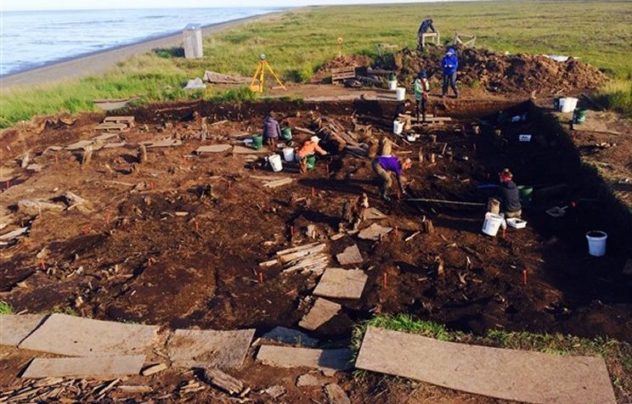
Quinhagak is a small town in Alaska with a population of less than 1,000. It became quite notable a few years ago when it proved to be an invaluable treasure trove of Yup’ik artifacts. The Yup’ik are a group of Eskimo people related to the Inuit who first settled in Alaska around 3,000 years ago. They inhabited the area around Quinhagak starting with the 14th century and recent archaeological discoveries show that they lived there continuously for at least three centuries.
The archaeological site called Nunalleq is actually located outside the town of Quinhagak and has already proven to be the biggest collection of pre-contact Yup’ik artifacts in the world, excellently preserved in permafrost. Thousands of items have been recovered but it seems that the bulk of the collection might already have been lost. Archaeologists are racing against the clock as the site is located along the coastline which is steadily eroding, washing away more artifacts with each passing day.
So far, the empirical evidence confirmed many tales of Yup’ik culture that have been passed down through oral tradition. Most notably, the evidence shows that the dig was once the site of a massacre in the mid 17th century described during a period of bloody inter-village battles known as the Bow & Arrow Wars. According to the legend, attackers burned the village and everyone in it, including the dogs. Anyone who survived the fire was shot with arrows and dismembered. Archaeologists found human and dog remains from that time with burn marks, as well as dismembered skeletons.
8Monster Waves

For hundreds of years, sailors shared stories of giant waves appearing out of nowhere, taking ships and their entire crews to their watery graves. Given how many legends are born out of a life at sea, this was also dismissed as another salty story. It actually wasn’t until 1995 that we had concrete evidence for the existence of these monster waves.
Today there can be no doubt. These giant waves, referred to as rogue waves, are real. Besides their massive size, rogue waves are characterized as unpredictable and spontaneous. While they are not the biggest waves in the world, they are unusually large for a given sea state and appear as a result of a combination of factors such as strong currents and high winds.
Rogue waves were confirmed on New Year’s Eve, 1995. A giant 25.6 m (84 ft) monster wave hit the Draupner platform in the North Sea off the coast of Norway. The Draupner wave became the first of its kind to be recorded by instruments, providing scientific backing to the anecdotal evidence collected over centuries.
Confirmation of the existence of rogue waves forced oceanographers to reconsider our understanding of the sea. Prior to this, they used a linear mathematical model to predict wave height. This resulted in a Gaussian curve that anticipated monster waves with extreme rarity such as once every 10,000 years. Now we know that is not the case and that rogue waves could have been behind many mysterious maritime disappearances that we must now re-evaluate.
7La Ciudad Blanca
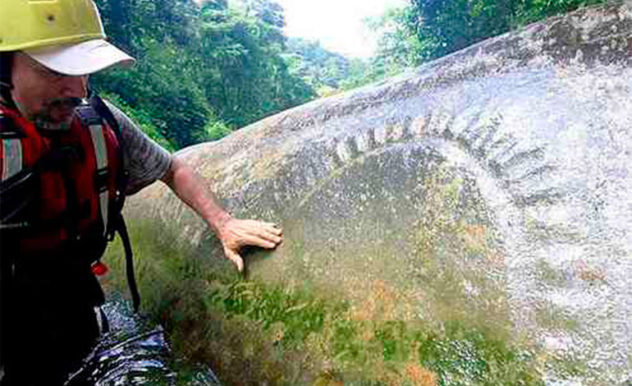
La Ciudad Blanca (the White City) is a legendary city said to be hidden away somewhere in the Mosquitia region of Honduras. Similar to El Dorado, La Ciudad Blanca, also known as the City of the Monkey God, was said to hold untold riches and word of it first reached Europeans through the Spanish conquistadors.
Interest in La Ciudad Blanca was rekindled at the start of the 20th century when several people attested to its existence. Most notably, adventurer Theodore Morde claimed to have found the lost city in 1940. He never told anyone else of its alleged location and, just to add fuel to the conspiracy fire, he died of an alleged suicide under suspicious circumstances.
Decades later, archaeologists have found a pristine site that was once home to an as-yet-unidentified civilization. This site was first found in 2012 using state-of-the-art LiDAR (Light Detection And Ranging) technology and investigations of the dig started last year. Already dozens of artifacts have been excavated which have been dated between A.D. 1,000 and 1,400.
Other archaeologists have criticized the coverage of the discovery as being sensationalist. However, the team in charge has defended its findings, specifying that it never claimed the site to be La Ciudad Blanca or the lost city allegedly found by Morde. Indeed, it is looking more likely that there never was one single mystical city in the heart of the Honduran jungle, but many such sites throughout Mosquitia that point to something far more captivating—a lost pre-Columbian civilization.
6Pirate Booty

Legends of sunken pirate riches have excited treasure hunters for centuries and will undoubtedly continue to do so in the future. In the modern age, the most significant discovery happened in 1984 when we found the shipwreck of the “Whydah Gally” once captained by “Black Sam” Bellamy. Not only did we find concrete evidence of its identity, but also genuine pirate treasure consisting of over 100,000 pieces of gold.
In 1996 a private firm found the wreck of the infamous “Queen Anne’s Revenge” (QAR). Once helmed by the notorious Blackbeard, The Revenge was one of the most heavily-armed ships to prowl the seven seas. Salvaging it from the watery depths is a slow and ongoing process. Unlike the “Whydah Gally”, QAR didn’t have any treasure aboard and historians believe Blackbeard might have even sunk it on purpose.
In 2012, a wreck though to be the “Port-au-Prince” was found in Tongan waters. According to legend, King Ulukalala and his men massacred the crew and scuttled the vessel and most of its treasure after salvaging the iron. If this turns out to be true, it will confirm an important chapter of Tongan history.
The Holy Grail of piracy remains the treasure of Captain Kidd and last year people thought they might finally have found it. A wreck believed to be Kidd’s Adventure Galley was found along with a 50-kg (110 lbs) silver ingot. Unfortunately, it later turned out that the ingot was 95% lead lost during port construction.
5Ancient Water Cleaning Trick

You would think that modern technology and medicine would render any practices used thousands of years ago obsolete. Actually, ancient Egyptians might have used a trick to clean their water which would definitely come in handy today.
It involves using the seeds of the Moringa oleifera tree. Archaeological evidence suggests that Egyptian women used to rub the seeds against the insides of their clay water pots and this was supposed to keep their water clean and fresh. Fast forward a few thousand years and researchers at Penn State University proved that the ancient Egyptians were on the right track.
We’ve known about the purifying potential of moringa seeds for a while, but it wasn’t until last year that scientists figured out why. The seeds contain a positively-charged protein called Moringa Oleifera Cationic Protein (MOCP). It has the power to kill bacteria and to clump them together so they fall to the bottom of the container. Researchers even worked out that the seeds should be harvested when they’re mature during the rainy season for maximum potency.
The Egyptians didn’t figure it out completely and this method, if used at all, worked only temporary. As the organic matter from the seeds remains in the water, it can become a food source for surviving bacteria which means that the water doesn’t stay clean in storage. However, the same research team showed that a mixture of sand and seeds can be used as a filter to pass water through it, clean it and store it for later.
4Secret Underground Tunnels

There has long been talk of secret ancient tunnels hidden underneath the Mexican city of Puebla. Late last year, this popular urban legend became a reality—the tunnels were found by city officials while performing regular public works maintenance.
The discovery is still very recent and there are a lot of details still to be uncovered, but experts believe the tunnels to be approximately 500 years old, built around the time of the founding of the city in 1531. So far, four separate entrances have been found with tunnels stretching between some of Puebla’s oldest forts and churches. This points to the tunnels being used for defensive purposes against invading forces.
As one of the oldest Spanish colonial cities in South America, this isn’t the first discovery of its kind made in Puebla. Years ago, defensive trenches were found that dated back to the Franco-Mexican War of 1861.
Workers also found an old bridge that was completely buried after a flood hundreds of years ago. As for the tunnels, they were filled with mud and silt and work is still underway to excavate them. Once they are finished, city officials hope to turn the 500-year old tunnels into a tourist attraction. At the same time, they will continue their search for more passageways as they believe that dozens of other tunnels may still hide under the city of Puebla.
3Bloodthirsty Vikings
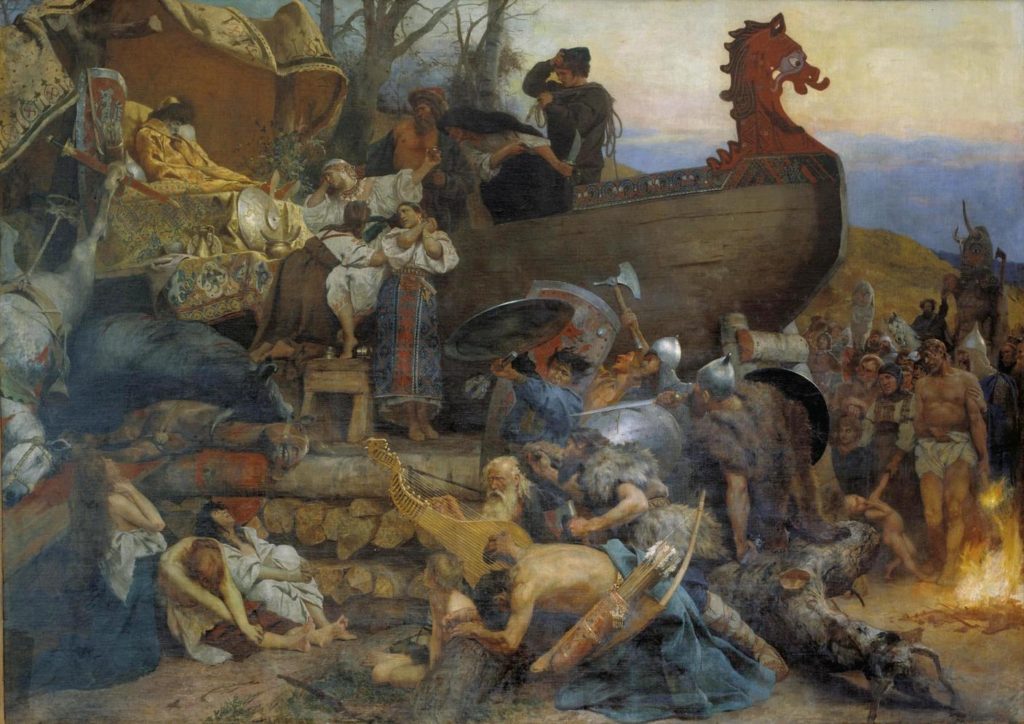
For centuries, Vikings have been considered bloodthirsty barbarians who pillaged towns all over the world. Legends spread of their cruelty which has earned them quite a fearsome reputation. However, in recent times there has been a movement to portray them in a gentler light.
Just as soon as this new idea arose, other scholars began to dismantle it by examining two new aspects of Viking life—slavery and human sacrifices.
New clues suggest that slavery played an important role in the Viking economy. One Arab geographer made mention of the Viking slave trade in A.D. 977. Other sources talk of Scandinavia being a hub for northern European slaves that extended into the Mediterranean and the Middle East.
Some historians believe that slavery was one of the primary motivations for their raids. The maritime nature of Vikings created a demand for wool for sails which shifted them towards a more agrarian society. Certain ancient great halls are now thought to have been plantations powered by slave labor.
Tales of Viking human sacrifices have long been debated. Nordic sagas mention Odin demanding sacrifices, but this was regarded as legend. Except that archaeologists found a sacrificial site at Trelleborg where children and animals were killed and thrown down a well with jewelry and tools. And Viking tombs were found to contain decapitated skeletons that were not kin to the other remains. This makes it likely that slaves were sacrificed when their masters died and buried with their bodies.
2Secret Pyramid Chamber
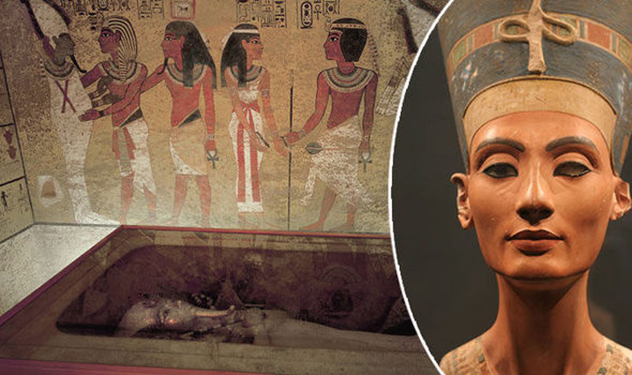
There are probably no burial sites on the planet that have spawned more legends than a pharaoh’s tomb. And when it comes to pharaohs, none are more famous than Tutankhamun. Which is why this all sounds like the plot of a new B-movie starring Nicolas Cage, but archaeologists genuinely believe they have found a secret chamber hidden away in the young pharaoh’s tomb.
As if that wasn’t enough, they believe the chamber holds the answer to one of ancient Egypt’s biggest mysteries—the location of the burial site of Queen Nefertiti. She ruled over Egypt during one of its most prosperous periods and helped her husband Akhenaten institute a new monotheistic religion that replaced the old gods with the sun god Aten. Her death and burial have been the subject of many debates among experts.
This new hypothesis about Tut’s tomb has been put forward by English Egyptologist Nicholas Reeves. He claims that thin cracks in the decorative paintings showed that there were more rooms behind the walls. He has found support from Egypt’s Minister of Antiquities who believes with near certainty that the tomb hides secret chambers. However, Reeves’ idea that one chamber might hold the mummy of Nefertiti has been met with skepticism.
There is no way that Reeves or anyone else would have been allowed to drill holes in the tomb’s wall to prove this idea, so the next best thing was to use ground-penetrating radar. Those results have proven controversial and have also divided experts.
1Carthaginian Child Sacrifices
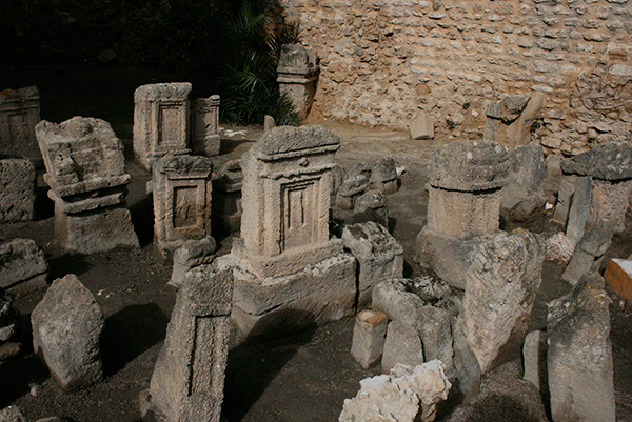
For centuries, stories of Carthaginians sacrificing their children have been dismissed as propaganda disseminated by the Greeks and Romans. However, at the start of last century archaeologists began excavating Carthaginian sites and found cemeteries known as tophets. The cemeteries contained cremated children’s bones placed into urns and buried under tombstones. Up until recently, scholars asserted that these were the remains of beloved infants that died during or soon after birth. To be fair, there are still scholars who believe this.
Even so, researchers who claim the cemeteries served a more sinister purpose have presented compelling evidence in recent years. They point to inscriptions on tombstones of people being blessed by the gods. While certain urns contained animal bones which were undoubtedly offered as sacrifices to the gods, these were presented in the exact same way as the urns with human remains.
Supporters of the hypothesis also point to a statistical anomaly. While hundreds of these remains have been found, they are nowhere near enough given the high infant mortality of that time if tophets were really just cemeteries for departed children. Carthage was one of the biggest cities of ancient history, but these burials averaged out at 25 per year. While child sacrifice was uncommon in the ancient world, it wasn’t the unthinkable taboo that some historians try to portray using our modern standards. Some even think that the first Carthaginians left their original home in Phoenicia to be able to practice this unseemly religious custom.
Radu is into science and weird history. Share the knowledge on Twitter or check out his website.








